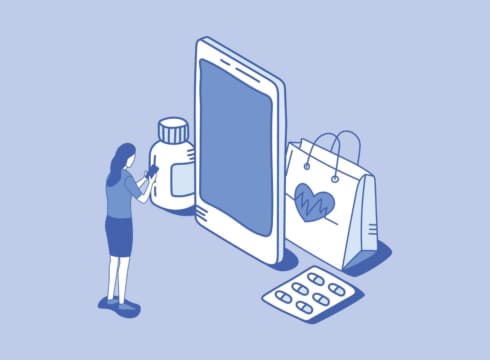Direct-to-consumer (D2C) brands have been the talk of the town for some time now
Like them or hate them — the 800+ diverse D2C brands have become an inextricable part of our daily lives
By early 2020, D2C health brands were on an exponential growth trajectory pumped by growth-at-all-costs strategies and high burn for new customer acquisition
Inc42 Daily Brief
Stay Ahead With Daily News & Analysis on India’s Tech & Startup Economy
Direct-to-consumer (D2C) brands have been the talk of the town for some time now. Celebrities are endorsing them on Instagram reels, YouTube Ads are singing their jingles and even OTT web series have promotional plugs. Google and Facebook are recommending them across their feed and leading sports teams have these D2C logos plastered across their jerseys. Like them or hate them — the 800+ diverse D2C brands have become an inextricable part of our daily lives.
Some of the earlier D2C companies reached INR 100 Cr in revenue within 4-5 years with 4x Return on Ad Sales (RoAS) or revenue of four for every rupee spent on ads and 60-75% gross margins. For comparison, Boat, MuscleBlaze and Mamaearth reached the INR 100 Cr milestone in 3 years while Intex, Organic India and Revlon took 10-20 years to reach the same scale for similar businesses. Healthcare D2C was estimated to be a $0.5Bn market growing at a 43% CAGR in 2022.
By early 2020, D2C health and wellness brands were on an exponential growth trajectory pumped by growth-at-all-costs strategies and high burn for new customer acquisition. Here’s why:
Healthcare Ripe For Disruption
D2C brands found a perfect opportunity in healthcare where around 60% of India’s healthcare expenditure was already happening out of pocket.
Early brands emerged in the over-the-counter (OTC) categories like skincare, haircare, sexual health, and nutraceuticals where existing wellness and Ayurveda brands were not appealing to young online buyers. Rising consumerisation with 230 Mn online buyers had already primed the users for trusting brands online.
Young Wellness Brands With Fresh Narratives
D2C health and wellness brands were characterised by new brand ethos, unique targeted advertising, and the ability to connect with customers. As opposed to the white and pale pharma products, these brands had a fresh look — bold colours, quirky logos, and a strong emphasis on product ingredients (the millennial user wanted to know what they were consuming even if it was to just google it).
The brand languages had a Gen-Z tone, they were not bound by social taboos or by regulations for TVCs and print media. They spoke about animal rights, women empowerment, sexual health, diversity and inclusion with a campaign for every foreseeable event and a moment marketing quirk for every news headline.
New Medium For New Narratives
Indians derived comfort in getting healthcare advice from Instagram, Facebook and YouTube. These had become the primary source of customer acquisition. The lockdown ensured people were spending more time and money online with better health at the top of their minds.
‘Influencer Marketing’ became a key component in every brand’s marketing strategy where young healthcare professionals danced while explaining wellness products. This was further made achievable with Amazon and Instagram supporting new brands and content creators respectively.
Powered By D2C Enablers
D2C enablers co-created a template to make D2C launches simple.
These created a level of abstraction that took away the burden of website creation and management (Shopify, Woocommerce), customer acquisition (Instagram, FB, Google Ads, Mailchimp), customer engagement (Intuit, WebEngage, Twilio, CleverTap, Hotjar, Gupshup), product manufacturing (multiple contract manufacturers), payments (Razorpay, Shopflo), warehouse management (WareIQ, Unicommerce), logistics (Delhivery, Shadowfax, Shiprocket, Pickrr) and analytics (Velocity Insights).
Growth At All Costs Brought Growth
At the core of it, a business should make sense. And in early D2C companies, it did.
Brands were strategically choosing high AoV (or high basket size to ensure free shipping is unlocked after the minimum order of INR 999 is crossed) and high-margin products (typically 70%+ categories). These were still clocking between 2-5x RoAS depending on the product and provided a great validation for the thesis. Not only were Indians buying online, but they were also taking healthcare decision-making into their own hands.
Comfort Of Process Replicability
‘Content to commerce’, ‘consultation-led guided purchases’ and many such GTM strategies had shown success and now their founders were creating sub-brands to repeat the same success story.
The entry of roll-up brands like Thrasio, Mensa and GlobalBees promised to make the scale-up easier (and also offer great acquisition multiples for quick exits which made the space even more exciting for founders).
As we evaluated over 70 companies in the overall D2C health and wellness space, we realised that the retention metrics, unfortunately, did not stack up for many startups. The D2C model and thesis were breaking at the seams and by mid-2021, had started seeing a downward trend.
{{#name}}{{name}}{{/name}}{{^name}}-{{/name}}
{{#description}}{{description}}...{{/description}}{{^description}}-{{/description}}
Note: We at Inc42 take our ethics very seriously. More information about it can be found here.


